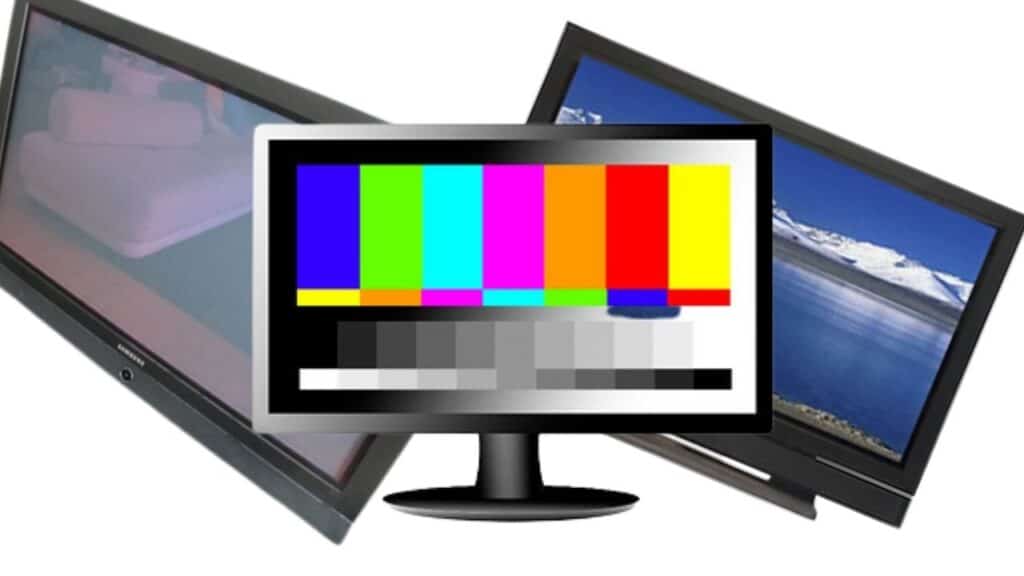
Although the first plasma TV was invented in 1964, it is only recently that the sales of such TVs increased. However, like any TV set before it, a big question looms over it; how much EMF radiation do they emit?
Plasma TV emits EMF radiation in the form of ultraviolet light. The amount of UV emitted is very minimal and not dangerous to human health. While the amount of radiation differs from the models and types of plasma TVs, the FDA states that they emit an average of 0.5 milliroentgen per hour (mR/h).
While the EMF emitted is normally considered as background radiation, long watching times could significantly increase your exposure. To learn more about plasma TVs and their emission rates, keep reading!
The Average EMF Emission From Plasma Tv
Like every TV or electric device, plasma TV sets also emit EMF radiation. According to the FDA, TV sets emit an average of 0.5 mR per hour if they were manufactured after the 1970s.
While electromagnetic radiation has a broad spectrum, plasma TVs emit only ultraviolet (UV) rays. To understand how plasma TVs emit UV radiation, first, we need to look at how the television works.
Plasma TVs use quick-acting fluorescent light cells to display images. The microprocessor of the TV controls the color of the light cells.
Plasma – an electrically conductive gas containing positively charged ions and electrons – is at the central part of the screen.
If you set up a voltage across the gas, the electrons migrate to the positively charged area, bumping into each other and other atoms. The collisions excite the atoms which then emit a photon of light.
This UV light photon interacts with the layer coated with phosphor material. The material turns UV light into visible light thus producing a display on the TV screen.
On average, the amount of ultraviolet emitted is very minimal. There is perhaps some comfort in knowing that the Environmental Protection Agency has determined that flat-screen TVs, including plasma TVs, are not hazardous to people’s health.
The reason being that these types of screens do not emit X-ray radiation which is extremely harmful to humans.
Know Your EMF exposure
Exposure to EMF radiation is inevitable. Solar radiation is the main source of EMF on Earth, especially in the form of UV light.
Man-made devices also emit their fair share of EMF radiation. For this type of radiation emission, the level of exposure can be determined. To determine your level of EMF radiation exposure, an EMF meter can prove to be effective.
An EMF meter measures the amount of electromagnetic radiation in your surroundings. The millirem (mrem) is a unit that indicates your radiation dose.
The higher the number the higher the exposure. In the US, the current federal occupational limit of exposure for adults is 5000 mrem and around 500 mrem for children, as reported by the MIT university.
According to the National Council on Radiation Protection and Measurements (NCRP), the average radiation dose for Americans each year is 620 millirems.
However, your EMF exposure depends on several factors. Also, some health symptoms can indicate your daily EMF exposure.
EMF can cause various health complications. Frequent vomiting without apparent reason, headaches, and skin rashes are tell-tale symptoms of EMF radiation exposure.
That is to say, if you experience these symptoms, your exposure rate is too high. In that case, it is important to identify the source of EMF and seek to avoid it.
What Is The Recommended Screen Time?
When watching TV, time can fly by without us realizing it. In the United States, children aged 8-12 spend 4 to 6 hours a day using screens. For teenagers, the daily screen time is a staggering 9 hours.
Children spend an unhealthy amount of time in front of screens.
The American Heart Association (AHA) recommends a maximum of 2 hours for kids and teenagers and no more than 1 hour for smaller children.
Children should also not watch any screen 30-60 minutes before going to bed. The blue light from screens affects the circadian rhythm, that is the sleep pattern, which in turn inhibits cognitive development and growth.
More so, the use of screens has been linked to obesity and cardiovascular diseases. Therefore, cutting down on screen time reduces the risk of certain diseases.
Plasma TV vs LED TV
Plasma TV and LED TV fall under the same category known as flat-screen televisions. However, the internal operation of the two TVs differs, and so does the amount of EMF radiation they emit.
Radiation from TV originates from the circuitry, especially the motherboard. The more complex the circuit design, the higher the amount of EMF radiation emitted from the television sets.
For both Plasma and LED TVs, the circuitry depends on the manufacturer. However, Plasma TVs have a higher screen refresh rate of 600 Hz, about 2 times higher than that of LED screens.
This means that Plasma TV might emit slightly more EMF radiation than LED TV sets. It is good to keep in mind that the level of radiation emitted from both TVs is very low.
As per the Food and Drug Administration (FDA), modern televisions have not been found to emit alarming levels of EMF radiation in the environment.
Therefore, both TVs are safe to use. But, some precautions could be taken to minimize the risk of exposure to radiation, however small the amount of radiation is.
How do I protect myself?
Protection against EMF radiation is a must in this day and age. With the advent of numerous electronic devices, radiation exposure also increases.
Below are a few tips on how you can protect yourself from radiation, especially TV radiation.
1. UV Blockers
The bread-and-butter of protection against radiation from Plasma TVs are UV blockers. The material of these blockers absorbs the radiation before your body does.
This significantly reduces your exposure. DefenderShield’s UV blocking gears have 99.9% effectiveness. You might want to try them out!
My favorite products are
2. Reduce Brightness
Set your plasma screen TV’s brightness to a low setting so it’s not too bright. The lower the amount of light emitted by your plasma screen, the lower the radiation levels.
You can adjust the brightness level on your televisions using the remote control.
3. Sit Far Away From The Tv
Radiation from Plasma TVs can be detected up to an inch from the screen. The closer you are to the TV, the more radiation exposure.
Hence, sitting far away from the TV and watching it less frequently protects yourself from the dangers of EMF radiation.
The same tips also apply to children. In order to guarantee minimal exposure, stick to a TV schedule and keep your distance from the screen


